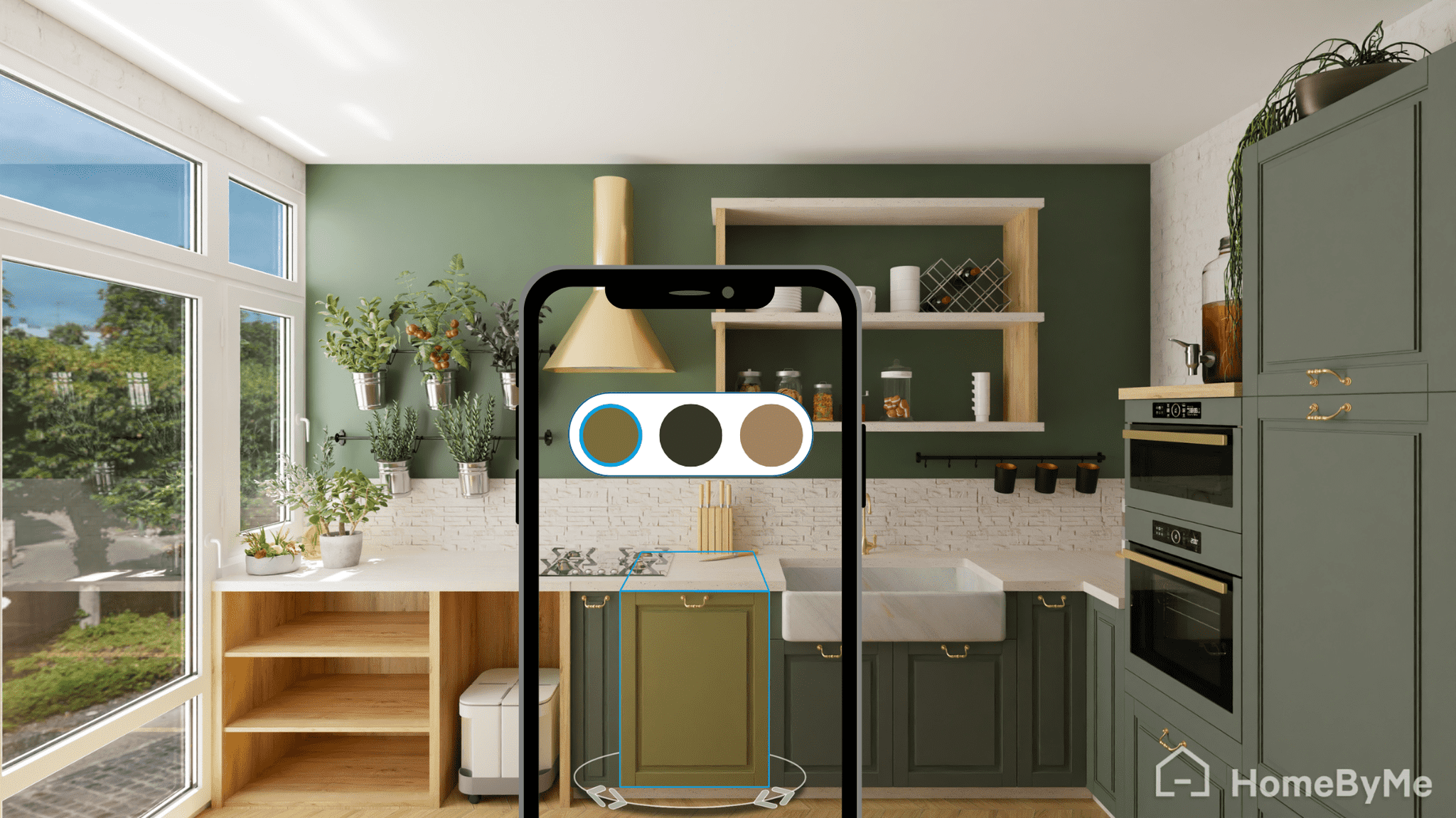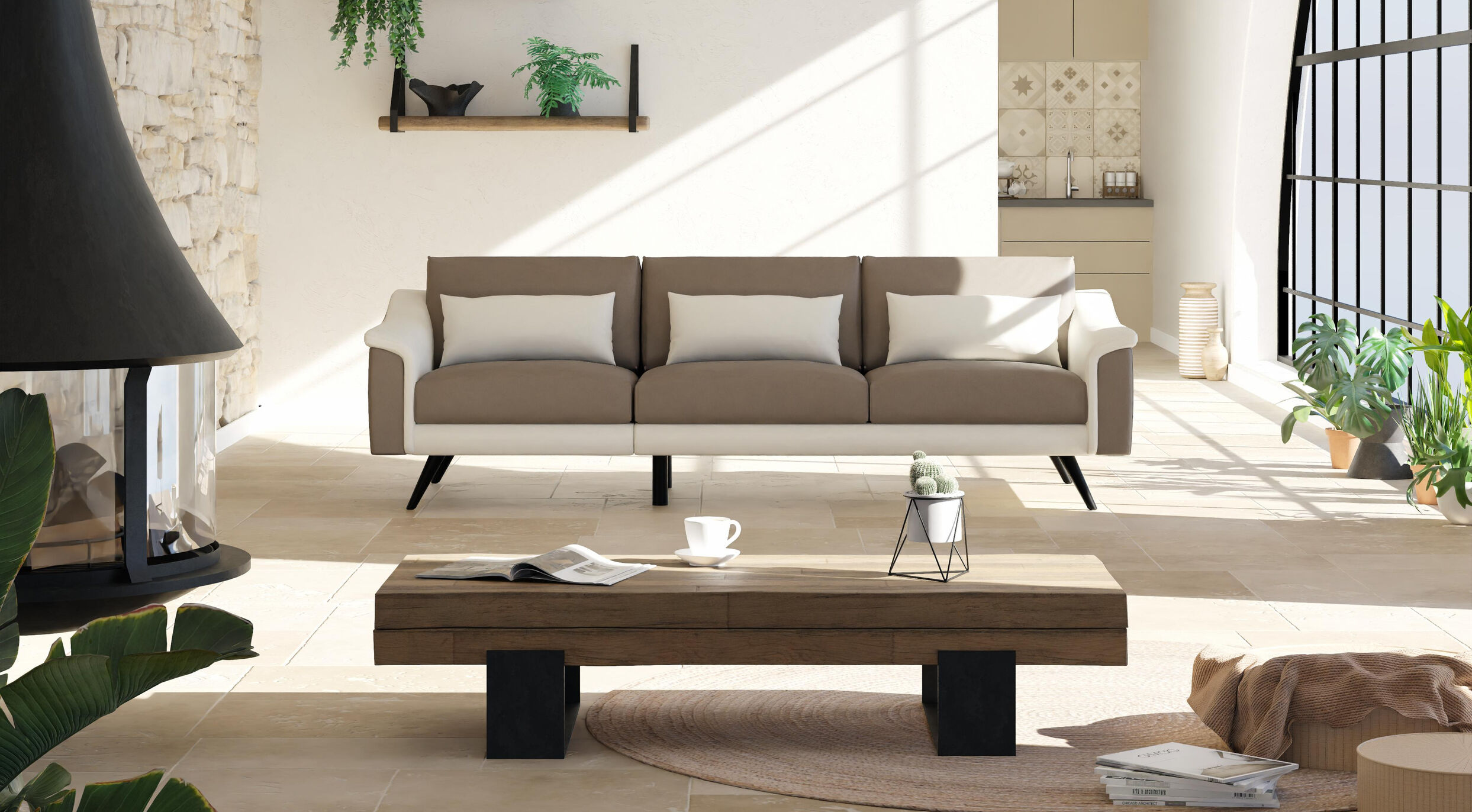3D: The New Retail Essential
From testing out a new hair color with a beauty editor to virtually trying out a pair of glasses, digital tools have given consumers the opportunity to feel more confident before making a purchase decision.
And this is no different when looking at the home. When purchasing furniture for your home or designing the layout of your kitchen, being able to accurately visualize how this will look and fit into a space is key. Ensuring a purchase will match the feeling and vision you’ve curated is essential. For a long time, online experiences fell short of the experience of walking around a show kitchen or seeing the little details on a sofa’s cushions. Even in-store experiences aren’t perfect, as consumers are at the mercy of stock levels and limited display options.
But 3D technology is changing that.
Across retail, the power of 3D is being recognized. From product configurators to space planners, the furniture, kitchen, bathroom, and storage industries are starting to realize how 3D can reimagine the consumer experience and elevate online interactions. In fact, 3D images on product pages (PDPs) can increase conversion rates by up to 250%.
Let’s explore the different applications of 3D and how these work to create a more immersive and personalized customer experience.

3D and Digitalization Go Hand in Hand
As digitalization becomes increasingly important in retail, both online and in-store, 3D technology plays a crucial role in shaping the future of customer engagement and operational efficiency. It serves as the foundation for many digital solutions that are quickly becoming standard in the modern shopping experience. From 360-degree product visualizations to augmented reality (AR) shopping experiences, 3D technology allows retailers and manufacturers to bridge the gap between digital and physical commerce.
For omnichannel retailers, 3D ensures a consistent and seamless experience across multiple touchpoints. Whether customers are browsing online, visiting a store, or using a mobile app, 3D-powered visualizations allow them to interact with products in the same immersive way, reducing discrepancies between expectations and reality.
Product Configuration
Product configurators allow people to see a product in 3D and edit features such as color, material, texture, and other customizable elements, depending on availability. Unlike static 2D images, which provide a limited perspective, 3D configurators offer a dynamic, real-time visualization that helps shoppers explore products from every angle, zoom in on intricate details, and better understand their dimensions and proportions in a lifelike manner.
In-store, interactive 3D configurators enable customers to personalize their choices on tablets or kiosks, creating a highly engaging and self-directed shopping experience. Store associates can also use these tools to better assist customers, showcasing real-time product modifications that enhance decision-making.
Space Planning
When consumers are choosing features for a kitchen, bathroom, bedroom, and even storage solutions, layout is absolutely crucial to determining how a space can be best utilized and which products work best with the room available. Using space planners, consumers at home or store experts can work to create and explore their ideal solution, testing different 3D products, styles and layouts to find what suits their home best.
With in-store 3D space planning, retailers can offer showroom customers a more immersive experience, helping them visualize entire kitchen or living room setups without needing physical display models. This reduces reliance on showroom stock while improving customer confidence in their purchase decisions.
Augmented Reality (AR)
Augmented reality goes beyond traditional in-store and online experiences by allowing consumers to actually see a product in their home prior to purchase. Visualizing an item amongst your own belongings can be difficult, leading to consumers returning items or abandoning carts.
Seeing exactly how an item would fit into their existing space with realistic proportions can give consumers 56% more confidence in the quality of a product, increasing brand loyalty and boosting revenues.
Retailers integrating AR into their physical stores can also create ‘endless aisle’ experiences, where shoppers use tablets or their own devices to see product variations not physically available in-store.

How 3D Measures Up to Traditional Images
Traditional 2D images are still heavily depended upon by retailers and manufacturers. Seeming at first glance as the simpler and cheaper option, moving away from the tried and tested method of 2D photos can be a large leap. But let’s see how the two actually weigh up against each other.
| Photo | 3D | |
| Cost | Higher production budgets are needed for staging | Up to 4x cheaper due to reusable models and digital editing |
| Flexibility | Costly and repetitive photoshoots are needed to display different product variations | Easy modifications without extra cost or time |
| Customer Experience | Limited visualization that relies on static images, making it harder to gauge size | Immersive visualization with 360° views and AR with realistic proportions |
| Strategic Management | No direct integration for data analysis or testing | Supports sales analysis, prototype testing, and product range optimization |
In the long run, 3D solutions offer vast benefits for the customer experience, as well as efficiency and cost savings regarding product updates, testing, and integration with sales functions. By creating a reusable 3D asset database, businesses can expand their site catalogue. Planners and configurators can then be introduced to offer greater customization and visualization for customers.
The Power of ‘Project Mode’
In the advent of digital marketing and eCommerce, images held great value. However, over time, as customers seek more immersive and personalized experiences, 3D tools have been able to meet this demand, generating essential images whilst also facilitating the transformation of those images into real projects.
By encouraging consumers to enter ‘project mode,’ businesses shift the focus from single-product purchases to comprehensive, solution-based shopping experiences. Rather than simply buying an item, customers can fully visualize their entire project using multiple products from your catalogue. For example, in home design, a shopper might start by customizing a sofa but end up designing an entire living room layout with matching furniture, rugs, and decor. This results in higher basket values as customers purchase complete solutions rather than individual pieces.
Furthermore, by offering an intuitive and engaging experience, 3D technology fosters greater customer loyalty. Shoppers feel more confident in their choices, reducing the likelihood of returns and increasing long-term satisfaction with their purchases. Brands that integrate 3D solutions not only elevate their digital presence but also create deeper emotional connections with customers, driving higher conversion rates and repeat business.
3D: The Future of Furniture Retail
With 95% of customers stating they would use a configurator to visualize a product, it’s clear that the influence of 3D is only growing and, before long, will be an expected part of the customer experience.
Through HomeByMe, a Dassault Systèmes solution, a single 3D model can be used for all digital needs, including configurators, planners, lifestyle images, packshots and more. Enrich the customer journey from inspiration through to personalization and conversion, with a digital 3D product database ready for seamless application across our range of solutions.
Find out how 3D could reimagine your consumer experience; reach out to our sales team today.
